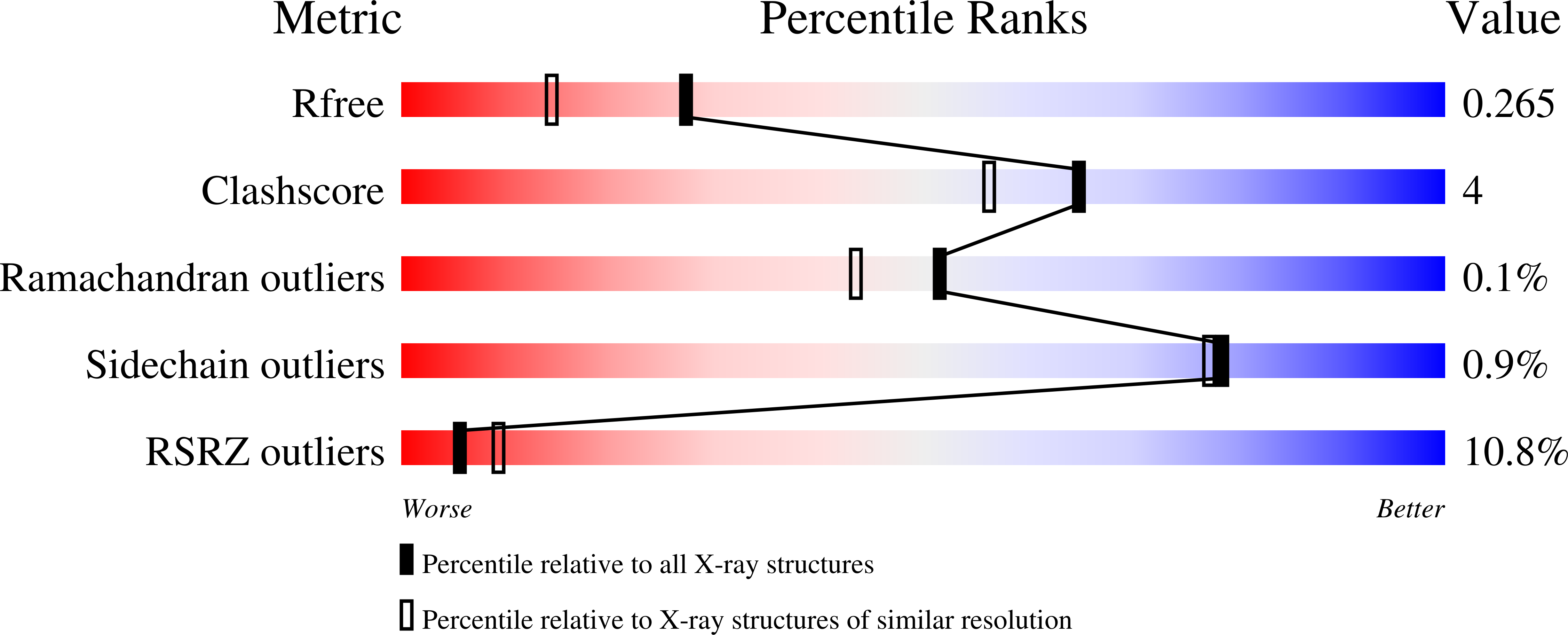Design, Synthesis, Biological Evaluation, and Crystallographic Study of Novel Purine Nucleoside Phosphorylase Inhibitors.
Skacel, J., Djukic, S., Baszczynski, O., Kalcic, F., Bilek, T., Chalupsky, K., Kozak, J., Dvorakova, A., Tloust'ova, E., Kral'ova, Z., Smidkova, M., Voldrich, J., Rumlova, M., Pachl, P., Brynda, J., Vuckova, T., Fabry, M., Snasel, J., Pichova, I., Rezacova, P., Mertlikova-Kaiserova, H., Janeba, Z.(2023) J Med Chem 66: 6652-6681
- PubMed: 37134237
- DOI: https://doi.org/10.1021/acs.jmedchem.2c02097
- Primary Citation of Related Structures:
7ZSL, 7ZSM, 7ZSN, 7ZSO, 7ZSP, 7ZSQ, 7ZSR, 8C25 - PubMed Abstract:
Purine nucleoside phosphorylase (PNP) is a well-known molecular target with potential therapeutic applications in the treatment of T-cell malignancies and/or bacterial/parasitic infections. Here, we report the design, development of synthetic methodology, and biological evaluation of a series of 30 novel PNP inhibitors based on acyclic nucleoside phosphonates bearing a 9-deazahypoxanthine nucleobase. The strongest inhibitors exhibited IC 50 values as low as 19 nM (human PNP) and 4 nM ( Mycobacterium tuberculosis ( Mt ) PNP) and highly selective cytotoxicity toward various T-lymphoblastic cell lines with CC 50 values as low as 9 nM. No cytotoxic effect was observed on other cancer cell lines (HeLa S3, HL60, HepG2) or primary PBMCs for up to 10 ¦̀M. We report the first example of the PNP inhibitor exhibiting over 60-fold selectivity for the pathogenic enzyme ( Mt PNP) over hPNP. The results are supported by a crystallographic study of eight enzyme-inhibitor complexes and by ADMET profiling in vitro and in vivo .
Organizational Affiliation:
Institute of Organic Chemistry and Biochemistry, The Czech Academy of Sciences, Flemingovo n¨¢m. 2, Prague 16610, Czech Republic.




















